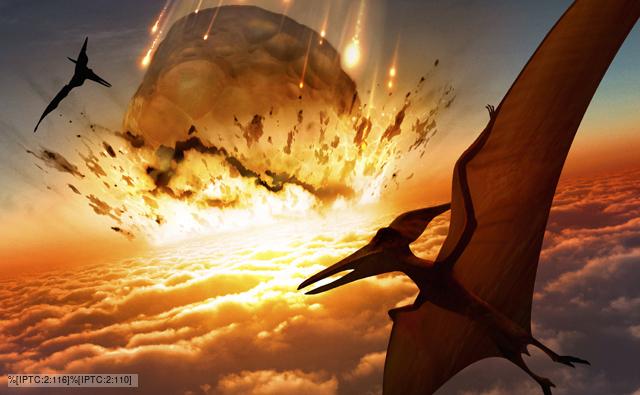Twilight Zone? Onset of the Earth’s Sixth Mass Extinction
Published on August 15th, 2014
One profligate species causes demise of thousands
Over its storied 3.8-billion year history, the long-running epic called Life on Earth has suffered five major setbacks, called mass extinction events. In a mass extinction, not just species, but entire taxa – genera, families and orders – can be swept away into oblivion, leaving behind only a smattering of fossils as mute testimony to their ephemeral presence on our planet.
In the wake of a mass extinction event there are great gaps and tears in the tapestry of life we call the biosphere. It can take nature and evolution eons – tens of millions of years – to fill this biological vacuum, empty ecological niches, once more. But the new life forms are not the same as the vanquished life forms. What vanished has disappeared for all time. Mass extinction is forever.
|
|
|
“The Great Dying” of the Permian-Triassic Mass Extinction Event |
The most staggering of the mass extinction events was the Permian-Triassic (P-Tr) about 242 million years ago, forming the boundary between the Permian and Triassic geologic periods. Nicknamed “The Great Dying,” an estimated 96 percent of all species then in existence perished in the P-Tr. Every living thing alive today is a descendent of those 4 percent of species that somehow managed to pass through the constricted bottleneck of the Permian-Triassic mass extinction.
 |
| K/T Mass Extinction – End of the Age of Dinosaurs |
The most recent die-off to afflict life was the Cretaceous-Tertiary (K/T) mass extinction some 65 million years ago, now believed to have been caused or aggravated by a comet or large asteroid that struck Earth near Mexico’s Yucatan Peninsula. The K/T was the death knell of the dinosaurs, but also of the ammonites, pterosaurs and numerous flowering plants.
Now many biologists believe Earth is at the onset of a sixth mass extinction. Unlike past die-offs caused by natural catastrophes, this one is due entirely to one multiplying species among millions – man – who has rampaged through the earth’s ecosystems like a proverbial bull in a china shop.
In a new paper in the journal Science, Stanford University biologist Rodolfo Dirzo and his team of colleagues warn that human activity is responsible for a looming age of “defaunation,” or the early stages of Earth’s newest mass extinction event, the first in 65 million years.
|
|
| An unfolding tragedy and outrage: The majestic, imperiled African elephant is being slaughtered for its tusks and ivory. |
The team reports that extinction has already claimed more than 320 land vertebrates (animals with backbones) since 1500. The world’s surviving vertebrates are 25 percent less plentiful than in 1500. This trend also holds for invertebrates, which include crustaceans, mollusks and insects like beetles and butterflies.
On a global scale, up to one third of all vertebrate species are already threatened or endangered. Some sources estimate today’s extinction rate at a thousand times the natural or background rate; the creation of new species can’t keep up with the accelerating losses.
Large mammals such as elephants, rhinoceroses and polar bears, known as the megafauna, are particularly vulnerable. The megafauna often have body parts in demand by humans – tusks in elephants, horns in rhinos, gall bladders in bears, etc. – that render them targets of poaching. Some are also killed indiscriminately for meat.
Megafauna also require more land and habitat to support viable populations, which frequently puts them in conflict with exponentially expanding human demands on land and resources from population and economic growth. In addition, large animals produce fewer offspring and have low population growth rates; their numbers can’t “bounce back” as quickly as smaller animals.
In experiments conducted in Kenya, when large mammals like zebras, giraffes and elephants are removed, the areas where they formerly grazed tend to be overwhelmed by rats and mice. Countless other effects ripple through the ecosystem, some of them backfiring on humans, such as increase in rodent-borne diseases.
“Where human density is high, you get high rates of defaunation,” says Dirzo.
We humans do have a choice, as I wrote in the closing paragraph of my chapter in the 2012 book Life on the Brink: Environmentalists Confront Overpopulation (Cafaro and Crist, eds., University of Georgia Press):
Our species is unique, because here and now only we have the ability to destroy, or to save, biodiversity. Only we have the ability to care one way or the other. The destiny of all wild living things is in our hands. Will we crush them or let them be wild and free? Limiting human population will not guarantee success, but not doing so means certain failure.
If we fail to humanely halt human population growth, life on Earth will enter a twilight zone – better yet a dead zone – from which there is no return. With the geologic past as guide, while biodiversity will return eventually in tens of millions of years, what is lost on our watch as stewards of the planet will have been lost forever.






